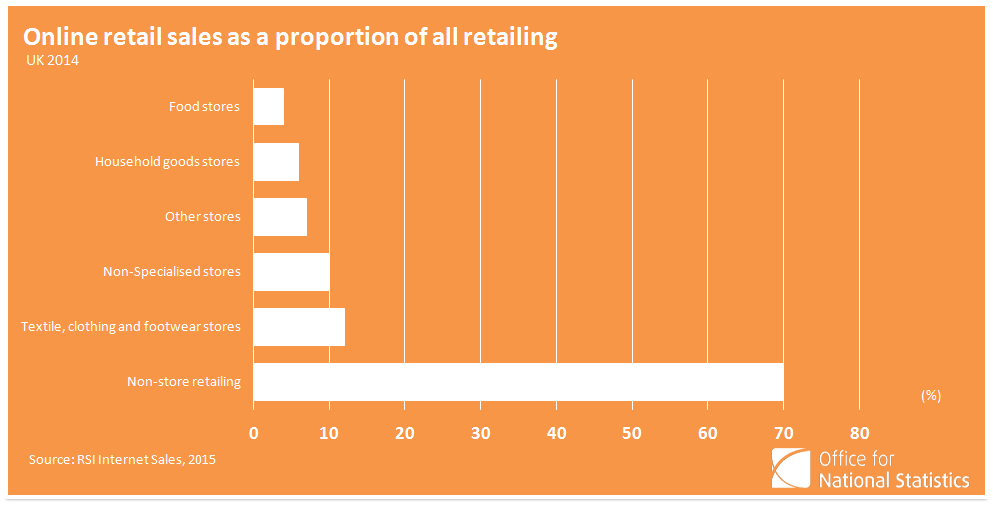The oldest shop in the UK has been there for nearly 600 years, and we've been buying things from traders for tens of thousands of years. So the idea of Retail isn't exactly new. Retailers love their stores, and we love them too. We like to 'go shopping' (our kids might be laughing about that in the not too distant future!). We like to be able to pick out the bananas that feel just right and we like to see what colour a t-shirt is in the sunlight. And you can't do that on a phone can you? On the other hand, I can sit in front of my favourite TV soap and order my groceries for delivery a few hours later. I can order my summer outfits to try on in the privacy of my own bedroom the next day. All very convenient!
But the iPhone hasn't even been around for 10 years yet, so things have 'gone digital' very quickly. When I was still in shorts there was a baker's van that came round to our house once a week - the shop came to us! Then, only 20 years later, the World Wide Web brought us the possibility of our modern, convenient shopping experiences. And now, according to Retail Week, 12% of the £339bn of annual retail sales in 2015 went via the internet - and that's growing at 10% a year. This graph from the ONS shows that 70% of online purchases are made from non-store retailers - like Amazon, Shop Direct, asos and Ocado and the rest from the 'digital' version of stores.

Food, which accounts for over 35% of all retail sales, only has 4% of those sales going through an on-line channel, so there's plenty of room for improvement.
"Build me an internet shopping site" they said to their IT department.
We don't know how, thought the IT department, So we'll have to make it up!
So they built something using the skills that they had, and it was really clever. You could virtually walk down the aisles and pick out what you wanted and put it in your trolley (note that we still use trolleys for on-line shopping). But that missed the point and it didn't work too well either.
Then they said:
"Build me a better Internet shopping site, the customers don't like it"
So the IT department bought some new tools and did some Agile development and built another website that was a bit better. But unfortunately that one wasn't that great either.
It was only when organisations started to realise that on-line shopping or 'digital' as it became known isn't just an IT project to replicate the status quo, but a complete change of mind-set that things have started to change.
When Angela Ahrendts joined Burberry in 2006, things weren't going very well. Brand image was very poor (remember the 'chavs'?), the share price was low and many thought that the great British institution had had its time. But just five years later the share price had quadrupled and Burberry was seen as a serious contender in the luxury fashion business, competing with the likes of Gucci, Armani and Ralph Lauren. And the reason? They went Digital. At the same time as a huge global expansion project to increase the store estate, they put together a winning digital strategy. The strategy involved a brilliantly managed change programme and some of the best minds in the business designing and implementing a new platform that linked everyone in the business with all their customers.
They were one of the first to offer 'click and collect', a multi-lingual website that could be accessed from any device, anywhere, anytime, and full personal interaction with the merchandise as well as buying direct from the runway. And they backed all this up with a top notch customer service operation. It's worked brilliantly well for them and for others who have followed in their footsteps.
So what's the winning formula for Digital Retail? It starts with designing and managing the organisational change that you're going to need to make, the projects and programmes that you're going to need to run and the target operating model you want to end up with. And it continues with:
Once you've got all that, it should be easy! But you're probably going to need help...
 Rupert Fairclough
Rupert Fairclough
Managing Consultant, CITI Limited